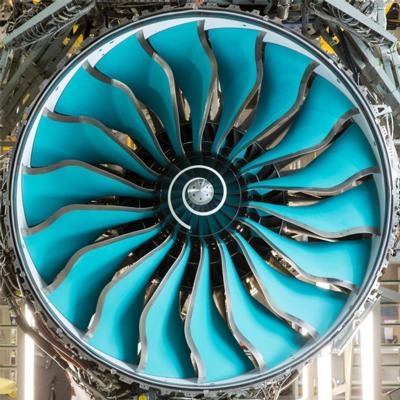Sun, Mar 02, 2014
Looks To Build On The Success Of The Trent Family
Rolls-Royce has shared details of its next generation of engine designs, which could be ready within ten years, featuring technology innovation designed to transform performance. The company has built a technology leadership position with its Trent family of engines, the latest of which, the Trent XWB, the company says is the most efficient engine flying today. Trent engines will continue in service for decades to come with 2,500 in service and more than 2,500 on order.

Rolls-Royce is continually innovating and, as part of that ongoing process, is looking to build on the success of the Trent family of engines with two new generation engine designs.
The first design, Advance, will offer at least 20 per cent better fuel burn and CO2 emissions than the first generation of Trent engine and could be ready from the end of this decade.
The second, UltraFan, a geared design with a variable pitch fan system, is based on technology that could be ready for service from 2025 and will offer at least 25 per cent improvement in fuel burn and emissions against the same baseline.
"These new designs are the result of implementing our ongoing technology programs," said Colin Smith, Rolls-Royce Director - Engineering and Technology. "They are designed to deliver what our airframe and airline customers tell us they need: even better fuel efficiency, reliability and environmental performance."
Both engine designs are the result of the ongoing research and development investment, of approximately £1 billion (approx. $1.67 billion) a year, which Rolls-Royce makes across its aerospace and non-aerospace businesses.
The designs will feature architecture and technology improvements, all currently at an advanced stage of development, that include:
- A new engine core architecture - to deliver maximum fuel burn efficiency and low emissions.
- A CTi Fan System - carbon/titanium fan blades and a composite casing that reduce weight by up to 1,500lb per aircraft, the equivalent of carrying seven more passengers at no cost
- Advanced ceramic matrix composites - heat resistant components that operate more effectively in high turbine temperatures.
- A geared design, called UltraFan, which will deliver efficient power for high-thrust, high-bypass ratio engines of the future.
(Image provided by Rolls-Royce)
More News
From 2014 (YouTube Version): Innovative Aerodynamic Technologies Produce Game-Changing Results At the NBAA 2013 convention, ANN CEO and Editor-In-Chief, Jim Campbell had a chance t>[...]
“This plan opens insurance options to a much wider variety of Canadian aviators across the country who have otherwise had more challenges with securing insurance coverage... >[...]
Taxi The movement of an airplane under its own power on the surface of an airport (14 CFR section 135.100 [Note]). Also, it describes the surface movement of helicopters equipped w>[...]
Aero Linx: The Vertical Flight Society (VFS) The Vertical Flight Society, formerly the American Helicopter Society, is the non-profit technical society for the advancement of verti>[...]
Also: Sustainable Aircraft Test Put Aside, More Falcon 9 Ops, Wyoming ANG Rescue, Oreo Cookie Into Orbit Joby Aviation has reason to celebrate, recently completing its first full t>[...]
 Classic Aero-TV: Active Winglets -- Tamarack Aerospace Partners with Cessna
Classic Aero-TV: Active Winglets -- Tamarack Aerospace Partners with Cessna Aero-News: Quote of the Day (05.03.25)
Aero-News: Quote of the Day (05.03.25) ANN's Daily Aero-Term (05.03.25): Taxi
ANN's Daily Aero-Term (05.03.25): Taxi ANN's Daily Aero-Linx (05.03.25)
ANN's Daily Aero-Linx (05.03.25) Airborne 05.02.25: Joby Crewed Milestone, Diamond Club, Canadian Pilot Insurance
Airborne 05.02.25: Joby Crewed Milestone, Diamond Club, Canadian Pilot Insurance



